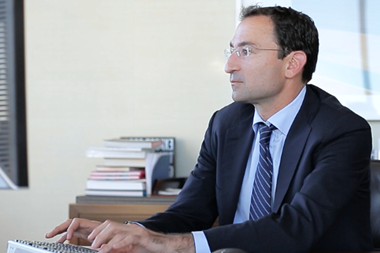Duodecimals allowed the ‘taker off’ to calculate area by multiplying feet and inches by feet and inches, measured by ivory scale rule off paper plans.

Coloured pencils marked what had been taken off in accord with the RICS Standard Method of Measurement. The ‘worker up’ then collated like items into a multi-leaf ‘abstract’. From these Treasury-tagged foolscap pages emerged the Bill of Quantities: once the bible of the QS profession.
I had to learn this stuff 50 years ago. What brings it back to mind
this week is reading Peter Pereira Gray’s well-admired report into that other branch of the surveying profession: valuers. An abstract of Pereira Gray’s findings: The Red Book, the valuer’s bible, is no longer readily believed by clients, because it is too easily manipulated by those seeking gain from either inflating or deflating values.
“It struck me that clients are becoming concerned about how valuation outcomes are arrived at and are becoming critical of the methodology used” is how Pereira Gray puts it more politely.
The Red Book, the valuer’s bible#, is no longer believed by clients as it is too easily manipulated
The predominant methodology is use of comparative evidence; a corruptible process that can “lead to widespread misbehaviour, undermining confidence in the whole valuation process”, he suggests.
There have been encouraging noises from top valuers for Pereira Gray’s 13 reputation-saving remedies, which include the installation of compliance officers, stricter separation from deal teams and client rotation of valuers.
Many agree that unless valuers modernise their methodology and case-harden the rules, they risk faith in their bible diminishing further. Pereira Gray says the “Red Book should be written for the lowest common denominator, not the highest”. In other words, think more like a criminal when drafting the next version.
Reviews in 1996 and 2002, which made some of the same points, were never fully acted upon. Valuers faced with a bullying client need far better professional cover than offered today. They need to be able to shrug and say: “Sorry, rules are rules.”
Today’s rules are easily bent by the bent. “We gained a sense that ‘misbehaviour’ is occurring unchecked in some quarters,” warns Pereira Gray. “Sadly, only a few rotten apples can spoil a whole batch.”

This is probably why he says the ‘primary mechanism’ for valuing should switch to forward-looking discounted cashflows, rather than sticking with rear-window comparative evidence.
With DCF, there can be little argument over the base data.
Total the known quantity of rent over a known lease time, then multiply the result by a formula that figures the present value of future cashflows.
Yes, it’s more complicated than that. But other asset classes are valued this way. Whole non-red books are published on the topic. Sadly, inertia means it is likely that students will be forced to thumb their dog-eared Red Book for years to come.
Me? Give me a ‘dim book’, a pencil and a five-foot wooden folding rule. The square yardage of distemper in that 10-storey stairwell can be worked up in a trice.
Zero-sum gaming
Want to snipe at insufferable greenies boasting of ‘zero-carbon’ projects? Query what percentage of carbon saved comes from planting trees in faraway fields.
The Catholic Church outlawed the sale of indulgences to pardon sins in 1567. Yet here we are, 455 years later, indulging consciences by pretending that 80% carbon-neutral projects can reach 100% neutral by planting saplings and calling it ‘offsetting’. The spread of the practice pushed up agricultural land prices 10% last year, says Knight Frank. “Buyers looking to plant trees to harvest carbon have been particularly strong players.”
Zero-carbon developments can grow from ground floor to roof level in two or three years. Trees take 30 years to reach what the Environment Agency calls ‘peak sequestration’. So it will not be until the 2050s that new buildings using newly planted trees to ‘offset’ carbon will be truly zero-carbon. PS: Buying ready-grown forest is just cheating, isn’t it?
Peter Bill is a journalist and the author of Planet Property and Broken Homes
































No comments yet